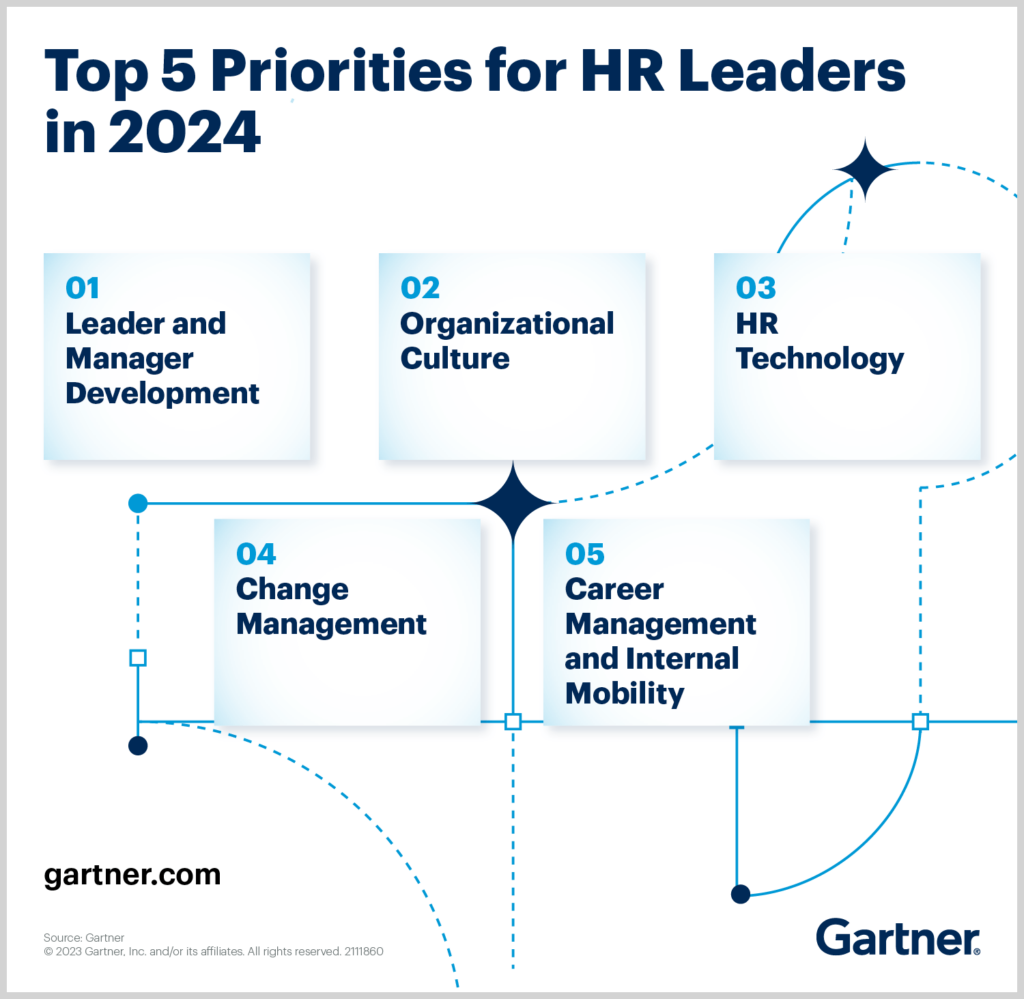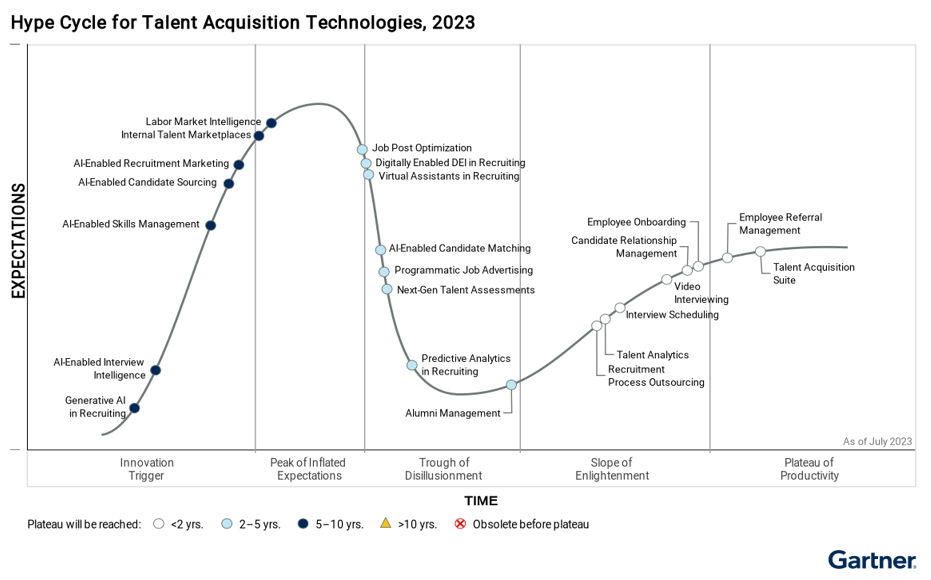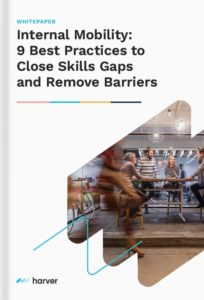Harver’s experts have already shared 4 top HR trends for 2024, from the ongoing shift towards skills-based approaches to how to approach AI in HR.
We’re also tracking what other thought leaders are saying, and want to share Gartner’s Top 5 Priorities for HR Leaders in 2024. Read on to see how many of these align with your organization’s priorities, plus how to support them.
What's in?

Gartner HR priority 1: Leadership development
According to Gartner, more than 75% of HR leaders say their managers are overwhelmed by growing responsibilities. What’s worse, nearly as many say their leaders aren’t equipped to lead change.
In short, managing has become unmanageable. Gartner recommends that HR leaders focus on:
- Resetting expectations with managers,
- Rebuilding succession pipelines, and
- Removing process hurdles.
At Harver, we’ve noticed this priority, too. More and more employers come to us asking about leadership and manager development. In addition to leveraging intelligent automation like video interviewing and scheduling to remove process hurdles, we also advise talent leaders to audit skills for leaders and potential leaders.
Pro tip: Simplify and speed up leadership development with behavioral assessments. The objective skills data identifies gaps and predicts fit to improve efficacy of leadership placement.
Watch our on-demand webinar to learn how UPS accelerated self-serve, personalized leadership development for 90,000+ leaders across their global organization.
Gartner HR priority 2: Organizational culture
Employers are still navigating the emergence of hybrid and remote work driven by the COVID pandemic. Gartner cites factors like less face-time with colleagues as a big hit on traditional workplace cultural experiences.
41% of HR leaders feel that hybrid work is compromising employees’ ability to connect with organizational culture. As a remote-first organization ourselves, Harver recommends making intentional and proactive efforts to resolve this.
For instance, as a remote-first workplace we live our Seek To Connect value by:
- Establishing employee resource or affinity groups, such as for LGBTQ employees,
- Encouraging in-person events where we have local hubs, and
- Using Slack channels to support community and culture in a seamless way.
Gartner HR priority 3: HR technology

Have you seen Gartner’s Hype Cycle for talent acquisition technologies? Check out our key takeaways from Gartner ReimagineHR in London to learn more. As you can see above, AI and generative AI are generating a lot of hype, yet many applications are still 5-10 years from actualizing expectations.
Are AI and generative AI still worth exploring? Absolutely, as they can be a significant productivity booster. But be mindful of risks, like using AI in HR without ensuring there’s always human oversight. For instance, Harver’s policy regarding AI is always to keep a “human in the loop” and only to use AI to reduce — never introduce — bias in any talent decision.
Pro tip: In addition to AI, consider intelligent automation. This HR tech uses pre-defined rules to automate tasks that otherwise slow down recruiters and hiring speed.
Instead of a machine making an unchecked decision for you, you determine upfront what should happen and when. The tech seamlessly automates that action, like scheduling an interview with selected candidates who meet established cutoff criteria.
Like what you see?
Don’t miss out. Subscribe to our quarterly digest to get the latest TA and TM resources delivered right to your inbox.
Gartner HR priority 4: Change management
We discussed ongoing uncertainty and volatility in our 2024 HR Trends webinar. Preparing for and adapting to constant change is fatiguing employees and leaders. Gartner notes that talent are slammed by the pace, continuity, and stacking of change.
No wonder only about 50% of employees trust their employer. Constant shifts in strategy and solution can be just as harmful, if not more, than resisting change at all. While some employers are still lagging behind digital transformation of their hiring processes, now organizations also need to contend with transforming how they manage change and resulting fatigue.
Gartner HR priority 5: Career management and internal mobility
86% of HR leaders believe their organization’s career paths aren’t clear for employees. In a world with persistent talent shortages and skills gaps, traditional job-based thinking is increasingly irrelevant for employers and talent.
Instead, Gartner recommends centering employee goals, interests, and skills to design adaptive career paths. In addition to supporting retention by demonstrating that you value employees and their goals, meeting their growth expectations also supports organizational growth expectations. For instance, by hiring and developing internally to fill roles most critical for profitability.
Tip: Adopt a skills-based talent strategy to identify what skills your employees have and how they’re distributed throughout your workforce.
Take the next step to enabling objective and effective talent management and mobility by reading our whitepaper with 9 internal mobility best practices.
9 internal mobility best practices
Follow these approaches and tactics to achieve one of your top talent priorities.
What are your HR priorities in 2024?
Fostering leadership development? Finding the right HR tech to solve your specific challenges? Enabling data-driven internal mobility?
Like many other HR leaders, you’re likely unsure of what to do next or how to accomplish it. We’ve heard it all before from employers. Schedule a demo and we’ll help your organization, too.



